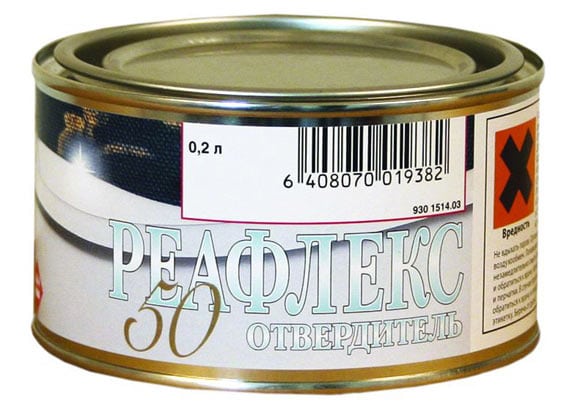The modern market offers a wide variety of hardener additives to dyes. However, many people underestimate the importance of such substances. Therefore, let's talk further in this article about the role that hardener plays for different types of paint.
- General characteristics of the material
- Classification of hardeners for coloring compounds
- What paints and varnishes need a hardener
- How to use such a tool in practice?
- How much hardener should I add to the paint?

General characteristics of the material
Many varnishes and paints harden due to the evaporation of the liquids that make up their composition. But there are paints and epoxies that are unable to harden on their own. To achieve this, special polymerizing agents must be used. They stimulate the polymerization process, which is actively used by a person when creating various kinds of compositions, as well as other decorating and construction purposes. Painting with such substances lasts longer.
Such substances are called hardeners and are often used in the construction and decoration of buildings for various purposes.
However, you should not think that this is a catalyst for a chemical reaction, because it is its full-fledged participant. It merges with the substance together, endowing it with a stable structure.
Classification of hardeners for coloring compounds
Painting with many formulations without a special curing agent will be short-lived. But how to understand which substance needs to be applied in a particular case? To do this, you need to study their types.
The main characteristics of such additives are largely determined by their chemical composition. And different types of such a substance have different curing conditions and durability. Accordingly, their fields of application differ. For each type of epoxy, a specific type of curing agent must be used.
Specialists divide hardeners into two groups:
- Directly hardeners, which are an integral part of two-component paints. They activate the polymerization of epoxy resins. And until you add them to the coloring composition, it can be stored for a very long time;
- Desiccants are additives that can accelerate the curing of single-component materials. The presence of such substances is a prerequisite only for oil paints.
Desiccants enrich the film thickness with oxygen, which accelerates the oxidation process, and, as a result, the polymerization of a single-component paint.
Painting not only dries faster, but also becomes more durable. Often, most of the desiccant is present in the finished paints, and then this content is a maximum of 5%.
to contents ↑What paints and varnishes need a hardener
Experienced specialists identify such classes of the most common paints and varnishes that need the use of chemical hardeners:
- Painting with enamels and varnishes, which are based on epoxy resins.The advantages of such compounds are called exceptional strength and high wear resistance. They are used quite widely. For example, to create protection of metal structures from corrosion, as well as to restore enamel on cast-iron bathtubs.
- Two-component epoxy paint used for concrete structures.
- Varieties polyurethane paintwhich are highly resistant to mechanical stress and elastic.
- Some types of acrylate two-component paint.
How to use such a tool in practice?
Each substance manufactured by the factory method has instructions for use. By following this detailed document, you can learn how to use the hardener in the right way and if necessary.
In cases where the product is used for acrylic paint, the dosage of the components can be one, and for a colorful composition of a different kind - completely different.
The technology itself boils down to adding a hardening agent to the paint right before it will be painted. Moreover, the resulting material must be mixed in the most thorough manner. For this purpose, you need to use a drill with a special nozzle.
After the coloring composition is prepared (mixed with the curing component), it must be used within the next 5 hours. After the expiration of this time period, the material will become unusable.
to contents ↑How much hardener should I add to the paint?
It is extremely important to observe the dosage of the composition recommended by the manufacturer and choose its current type. Often, the ratio of the coloring base and curing components in different cases can vary from 5 to 25%. And here it is important not to make a mistake. After all, with household use of hardeners, it is easy to make a mistake, which can affect the final quality of the product.
So the uniformity of the paint or varnish layer may change, it may become cloudy, be less solid and durable. Painting in this case will be unsightly and not durable.
If the hardener is not enough in the coloring matter, then it will dry for a very long time. In this case, the strength of the paint may not be high enough. If there is too much of it, then the painting will be brittle and will soon crack.
If your plans include painting with such compounds that need the use of a hardener, then you need to choose the latter very carefully. Carefully study the properties of the selected paint and select the curing additive that is relevant to it, so that the result is attractive and durable.









